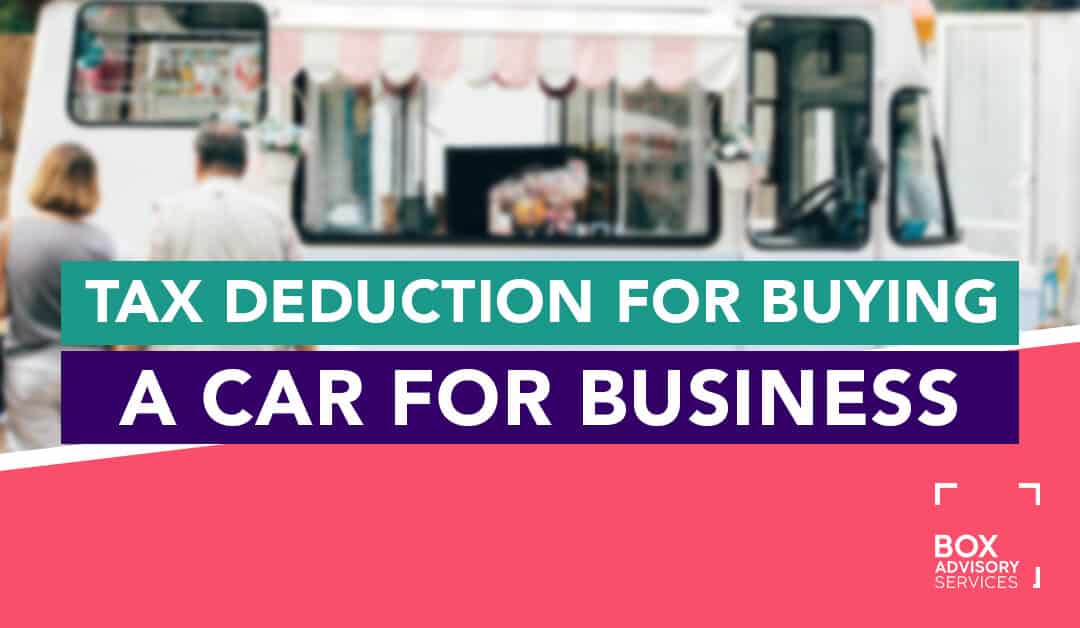
BY
|
Buying a Car for Business in Australia – Tax Write-Off (2025)
As a savvy business owner or entrepreneur, you’re always looking for ways to reduce your tax burden and increase your bottom line.
One such opportunity lies in the realm of business tax write-offs. Understanding motor vehicle expenses is crucial, as these costs can be eligible for tax deductions and significantly impact your tax filings.
Unfortunately, most of the time, business owners don’t fully understand what they can and can’t claim. And simply buying a car through your company doesn’t necessarily result in a significant tax break.
There are various factors you need to consider before determining if purchasing a vehicle for business is the right decision.
Here’s what you need to know to make an informed choice when buying a car for tax write-off purposes for your Australian business this year.
What is Australia’s Business Car Tax Write-Off?
In simple terms, a business tax write-off is an expense that can be deducted from your taxable income. It’s a way for the Australian Taxation Office (ATO) to acknowledge that running a business often involves significant outlays, and these should be taken into account when calculating your tax liability.
The ATO allows businesses to claim a deduction for the cost of a car if it’s used for business purposes. This includes the cost of running and maintaining the car. However, the amount you can claim depends on the type of car, how much you use it for business, and the method you choose to calculate your deductions.
For passenger vehicles, which are designed to carry a load of less than 1000kg and fewer than nine passengers, there is a specific car limit that impacts how much can be claimed as a deduction. This limit is crucial for understanding the maximum amount you can write off for such vehicles.
How to Qualify for a Car Tax Write-off in Australia
Qualifying for a car tax write-off in Australia in 2025 involves several steps:
1. It Must Primarily Be Used For Business Purposes
First, you need to ensure that the car is primarily used for business purposes. This means more than 50% of the car’s usage should be for business-related activities.
2. Maintain Accurate Records
Second, you should maintain accurate records of the car’s usage. This includes keeping a logbook documenting the car’s business use and all expenses related to the car, such as fuel, maintenance, insurance, and registration fees.
3. Choose the Right Calculation Method
Third, you need to choose the appropriate method for calculating your car tax write-off. The ATO allows two main methods: the logbook method and the cents per kilometre method.
The logbook method is based on the actual expenses and business use percentage of the car. In contrast, the cents per kilometre method allows you to claim a fixed rate for each business kilometre, up to a maximum of 5,000 kilometres per year.
How Does Your Business Structure Affect Your Tax Deduction Claim?
When claiming tax deductions for a business vehicle, you must consider your business structure and who owns the car. This will impact your calculation method, eligible expenses, and fringe benefits tax obligations.
For sole traders and partnerships, you must exclude any private use of the vehicle. You can choose to calculate deductions using either the cents per kilometre method, capped at 5,000km, or the more detailed logbook method for higher business kilometres.
However, companies and trusts cannot use these simplified calculation methods. Instead, they must claim deductions based on actual expenses.
You can claim running costs and depreciation if your business owns or leases the vehicle. But be aware that you may owe fringe benefits tax if employees use the business vehicle for private purposes.
Alternatively, if an employee owns the business vehicle, your business reimburses costs or pays an allowance and claims a deduction for these expenses. However, you can’t claim depreciation on an employee-owned vehicle.
How Does Claiming Depreciation Work?
As a vehicle ages, it is subject to general wear and tear. In other words, each year, the value decreases and therefore depreciates.
The ATO introduced simplified depreciation rules for small businesses to simplify the process of claiming tax deductions. So, a small business can choose to use the simplified depreciation or general rules, depending on what best suits their circumstances.
The simplified small business depreciation rules include the following.
Instant Asset Write-Off
Under the instant asset write-off rule, you can immediately claim a small business tax write-off for the cost of the business-use portion of the vehicle in the same year that you first used it.
Generally, the vehicle cost would have to be less than the relevant threshold. The threshold has changed numerous times over the past few years. For the 2024-25 financial year, eligible businesses with turnover of less than $10 million can immediately deduct the full purchase price of an asset if the value is less than $20,000.
So the car limit would be $20,000 if you wanted to claim an immediate deduction for the entire cost.
General Small Business Pool
According to the small business pool simplified depreciation rule, business owners can claim deductions on depreciating assets, such as commercial vehicles, at an accelerated rate.
In other words, small businesses can pool their higher-costing business-use assets and claim a 15% deduction in the year you started using the asset or installed it ready to be used and a 30% deduction each year after the first year.
Note: Higher-cost assets are generally those that cost more than or equal to the relevant instant asset write-off threshold.
Keep in mind, though, that if you use the cents per kilometre method, you can’t claim depreciation as a separate tax write off as it is already taken into account.
Potential Pitfalls to Avoid When Buying a Car for Business Tax Write-off
While buying a car for business tax write-off can provide significant benefits in 2025, there are also potential pitfalls to be aware of. One common mistake is failing to keep accurate records. Without a detailed logbook and receipts for all car expenses, you may struggle to substantiate your claim if the ATO audits your return.
Another potential pitfall is underestimating the ongoing costs of owning a car. While the initial purchase price is a significant factor, don’t forget to consider costs like fuel, insurance, maintenance, and depreciation.
Lastly, avoid falling into the trap of buying a luxury car solely for the tax write-off. While a luxury car may provide a larger initial write-off, it will also have higher running costs and may depreciate faster than a more modest vehicle. You’ll also be responsible for luxury car tax.
How Does Buying a Car for Business Affect GST?
When purchasing a motor vehicle for your business, it’s important to consider the GST implications. If your business is registered for GST, buying the vehicle under the company name allows you to claim the GST credit on the purchase. However, there are limits to the amount of GST you can claim.
GST Claim Limit for Motor Vehicles
For the 2024-25 financial year, the car limit is $69,674. This means that the maximum GST credit you can claim on a motor vehicle purchase is 1/11th of the car limit, which equates to $6,334. Even if you purchase a vehicle that costs more than the car limit, you can only claim up to this maximum GST credit amount.
If you purchase a motor vehicle under your company name and later decide to sell it, you will be required to pay 10% GST on the sale price. The GST payable on the sale of a vehicle is not limited.
Key Takeaways
- Choose the right calculation method based on your business structure, ownership, and usage patterns to maximise deductions. The logbook or cents per km methods apply to sole traders but not to companies.
- Keep accurate records like logbooks to substantiate your claim, especially for higher business use. Failing to do so may risk an audit.
- Consider ongoing costs like fuel, insurance, and depreciation, not just the purchase price, when buying a business car. The total cost of ownership matters.
Getting your business car tax deductions right can be complex, but the rewards make it worthwhile. For personalised tax advice on maximising your car deductions, contact the expert team at Box Advisory Services today.
FAQs
What Expenses Can I Claim for a Business Car?
You can claim the running costs of a business car, including fuel, servicing, insurance, registration, and interest on a car loan. You may also be able to claim depreciation and lease payments. However, you can only claim expenses related to the business use portion of the car. You need to exclude any private use.
How Do I Calculate the Business Use Percentage of My Car?
To determine the business use percentage, you need to keep logbooks for at least 12 continuous weeks. The logbook will track your odometer readings at the start and end of each business trip. You can then calculate the total business kilometres as a percentage of your total kilometres travelled during the logbook period. This gives you your business use percentage to apply to your car expenses.
What Methods Can I Use to Claim My Business Car Expenses?
The two main methods are the logbook and the cents per kilometre methods. The logbook method allows you to claim based on your actual car expenses and business use percentage. The cents per km method lets you claim a maximum of 5,000 business kilometres per year at a set rate determined by the ATO. Companies and trusts can only use the actual cost method.
When Do I Need to Update My Logbook?
You need to update your logbook every 5 years or if your business use percentage varies by more than 10%. Failing to update your logbook regularly is a red flag for auditors. Keeping your logbook up-to-date ensures your claim is based on accurate business use.
What are the Risks of Getting My Car Claim Wrong?
The main risks are failing to substantiate your claim, overstating business use, or claiming private expenses. Any of these could trigger an audit and lead to penalties from the ATO. You may have to repay wrongly claimed deductions plus interest and administrative penalties. Taking care to comply with the ATO’s requirements can help avoid such risks.
Do You Pay Stamp Duty on a Car Transfer in Australia?
Yes, in most Australian states and territories, you are required to pay stamp duty when transferring the registration of a used car into your name.
Stamp duty is a tax levied by state governments on transferring assets like vehicles and property. The amount of stamp duty payable on a car transfer depends on the state or territory, as well as the vehicle’s market value or sale price – whichever is higher.
In general, you can expect to pay between 3-6% of the car’s value in stamp duty when transferring registration. To complete the transfer, you must submit an application form and stamp duty payment to your relevant roads and traffic authority. It’s important to factor stamp duty into the cost of purchasing a used car.
And if you’re transferring a business vehicle, be aware of any potential stamp duty concessions. Failing to pay the appropriate stamp duty can lead to fines and penalties from your state revenue office. As the buyer, you must ensure stamp duty is paid correctly on any used car transfer.




